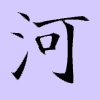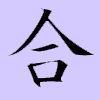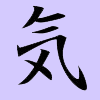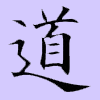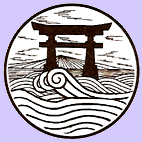| |


Tributes to Saito Sensei
Sensei Pat Hendricks
Remembrance of Morihiro Saito Sensei by Pat Hendricks, Aikido of San Leandro
Every now and then, a rare human being is drawn to an art and follows it with an unrelenting passion. When this combines with coincidences in history, an epic figure emerges. This was the story of Saito Sensei, who happened to meet
O-Sensei at a time when he was ready to seek his passion in life. There is no way to describe every facet of his life that embodies the martial spirit. Anyone who came into contact with Saito Morihiro Sensei knew that life was meant to be lived 100% and when you find your path there can nothing else to follow. He taught with his examples, his spirit and his love. Every student felt special under his tutelage and the whole Aikido world was in awe of his knowledge and presence.
He will be remembered as one of the great martial artists in history as well as a man of integrity. Although his physical body has passed, as with all great men, his memory and spirit will live on in every dojo, in every tai no henko around the world.
Sensei T.K Chiba
A Memorial Address for Saito Sensei by T.K. Chiba, 8th dan Shihan
The Aikido world suffered another huge loss with the death of Morihiro Saito Shihan, who passed away on May 13, 2002. He was a long-time follower and one of the senior disciples of the founder Morihei Ueshiba, and served as the caretaker of the Aikido Shrine in Iwama, Ibaragi Prefecture, Japan. His distinguished influence can be seen either directly or indirectly in almost every part of the globe.
As he often called his art “traditional Aikido,” his art unquestionably carried the weight of O-Sensei’s direct transmission in its essence as well as from the perspective of historical fact.
I have been lucky enough to have had opportunities to learn the art from Saito Sensei’s teaching at the time I became an uchideshi at the Iwama dojo in the late 1950s, as well as at the times he was invited to teach at Hombu Dojo one Sunday a month in the early 1960s.
I still can hear the sound of his footsteps approaching the dojo from his house at Iwama, which was not more than 50 meters away, in the early morning for the morning class. As the peculiar sound of the geta (wooden shoes) echoed through the frosty pine woods, I had to consciously wake myself up, thinking, “Here he comes.” I had to be ready not only for training on the mat, but to make sure everything had been done exactly the way it should be. Not a single thing, not the tiniest thing, could be missed or not taken care of, not even once.
Saito Sensei used to take care of early morning and evening class in Iwama whenever he was not on his work rotation (he worked for the national railway system).
O-Sensei also taught evening class occasionally or would come to watch the class. He sat in front of the kamiza with the eyes of an eagle, wordless and motionless, while Saito Sensei led the class. O-Sensei often emphasized the importance of katai-keiko, which can mean in Japanese, “stiff,” but it really means to be rigid, vigorous, with full force, without sparing any power, without play.
The training and atmosphere at Iwama were not only different from what I had experienced at Hombu Dojo but very much the opposite. Because Hombu training strongly emphasized the flow of ki, naturally I was thrown into confusion at first.
A large portion of the membership at Iwama Dojo consisted of local farmers, hard workers who spent all day in the fields. They had thick bones and great physical strength, combined with a peculiar local character known as “Mito kishitsu,” a type of manliness close to gallantry. Altogether, it was quite an opposite culture from Hombu Dojo in Tokyo. Because it is in the capital of Japan, Hombu’s membership consists of white-collar workers, intellectuals, businessmen, politicians and university students.
Any members who came to visit Iwama Dojo from Hombu must have looked pale and weak from city living to Iwama members. Indeed, the Iwama students treated us from Hombu as such and challenged us vigorously. It was a matter of survival for members from Hombu Dojo, including Hombu uchideshi like myself. And Saito Sensei was on top of that mountain, which we had to climb with all our might.
Naturally, Iwama wasn’t a popular place to be for Hombu uchideshi, due not only to the challenges they had to encounter, but also the intense daily duty as uchideshi. That included the fieldwork on the farm, taking care of the dojo and shrine, and the most difficult part, looking after the old couple, O-Sensei and his wife. This was found to be just unbearable for most of the city boys, who were accustomed to the clamor and luxury of city life.
O-Sensei also occasionally gave instruction in the woods outside of the dojo during the daytime. The training was mostly vigorous yokogi-uchi solo and partner work. Traditionally, this is the training system, well-known in the Jigen School in Kagoshima, Southern Japan, in which the practitioner continuously strikes bundles of fresh-cut branches that are laid down on a criss-cross wooden base. When I first got involved in this training, I lost the skin on my hands and started bleeding within 10 minutes.
It appeared that Saito Sensei was always conscious of O-Sensei’s presence, whether or not O-Sensei was physically there at Iwama. Saito Sensei showed no difference in his teaching, but always stuck to the basics of katai-keiko.
I remember profoundly one demonstration he performed along with other senior shihans in front of O-Sensei on the occasion of the New Year’s celebration at Hombu Dojo.
He only did katadori ikkyo through yonkyo as plainly as he usually did in his class. He knew well the danger of doing something else in front of O-Sensei.
I am very much aware of the great contribution and service that Saito Sensei rendered to the Aikido world. Personally, I feel he was not only one of the greatest Aikido teachers but he also rendered a great service to O-Sensei and his wife in their later years. It was obvious that it came from profound respect and loyalty toward his teacher.
I often wonder myself if I would have had the same willpower to commit myself to such a degree of personal sacrifice and that amount of work, over which even family members may have hesitated.
It wasn’t an easy task, as anyone who knew the personal character of O-Sensei and his wife would know. They had life values far different from the Japanese of today. I can only guess, when I think back now, that there must have been something beyond respect and loyalty that Saito Sensei felt toward his master. I can only think it was something like an aesthetic he was brought up with and he embraced in his heart and died with it. I see this as the classic exemplified beauty of the embodiment of the essence of warriorship.
As the generations continue to shift, this particular history of Saito Sensei’s life tends to be forgotten or ignored behind the official Aikido history as interpreted by the official authority. This very private part of Aikido history - his virtue, along with his family’s sacrifices - deserves to be acknowledged with respect and gratitude and should be remembered for generations to come. Writing a note such as this I feel is a part of my responsibility as someone who witnessed this part of history with my own eyes.
So this is the elegy I would to offer to Saito Sensei, in his honor. I pray with my deepest vow for his eternal rest in peace.
Gassho
Palm to Palm,
T.K. Chiba
San Diego, Calif.
May 16, 2002
This essay originally appeared in Biran, the Aikido Journal of
Birankai/USAF-Western Region.

